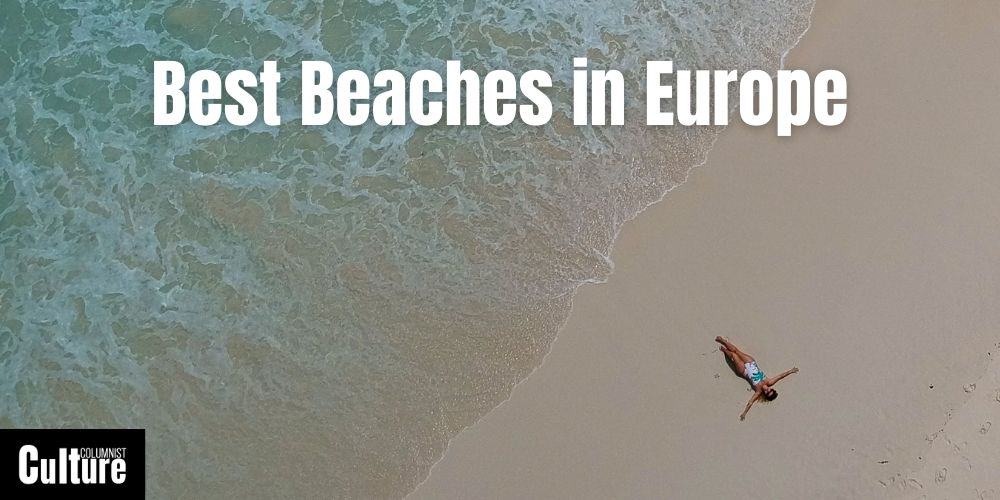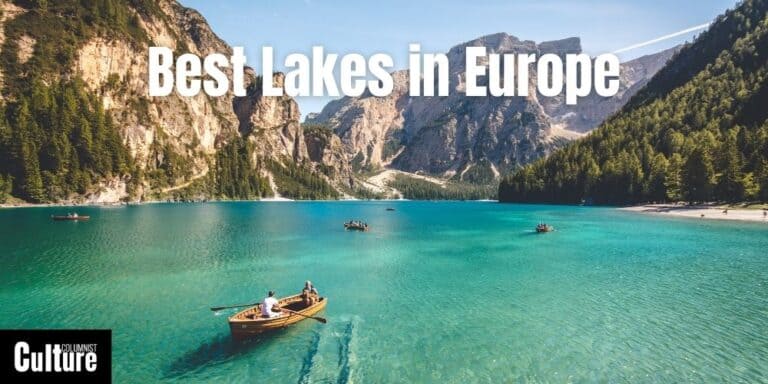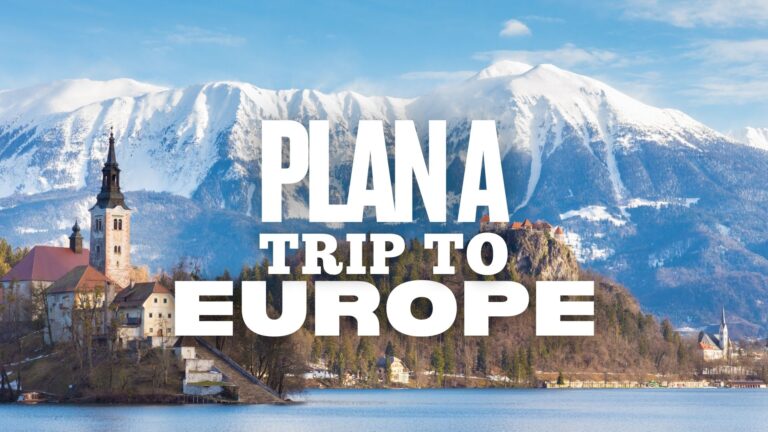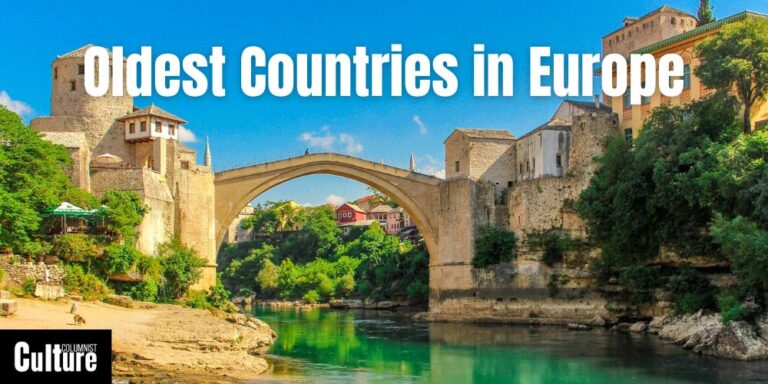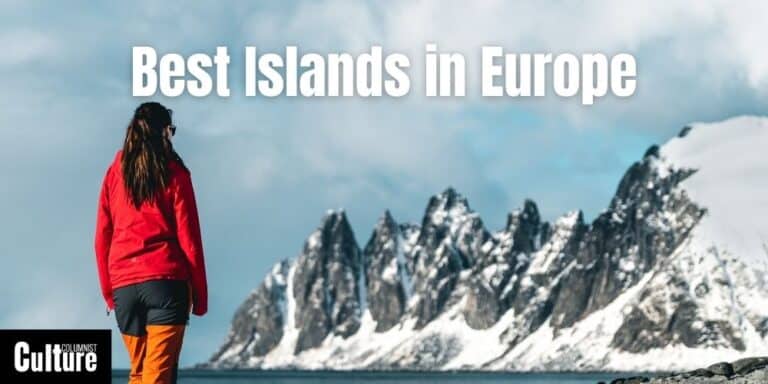The Best Beaches To Visit In Europe
Europe is not just about historical cities and grand architecture; it’s also home to some of the world’s most stunning beaches. From the turquoise waters of the Greek Islands to the rugged coastline of Norway, European beaches offer a variety of experiences for every kind of beachgoer.
When choosing the best European beaches to visit, it’s important to take into account the local climate, safety measures, water quality, and available activities. With so many options across different countries, it’s good to keep in mind what you’re looking for. Do you want a lively beach with plenty of amenities, or do you prefer secluded spots for relaxation?
While famous beaches like Navagio in Greece or La Concha in Spain are often packed with tourists, less-known options like Salema in Portugal or Cala Gonone in Italy offer serenity without compromising on beauty.
So whether you’re looking for a fun-filled family vacation or secluded seaside venture, Europe doesn’t disappoint. Below is a curated list of the best beaches on the continent, tailored for a variety of tastes, budgets, and lifestyles to help you find the perfect sandy escape.
Pampelonne Beach, France
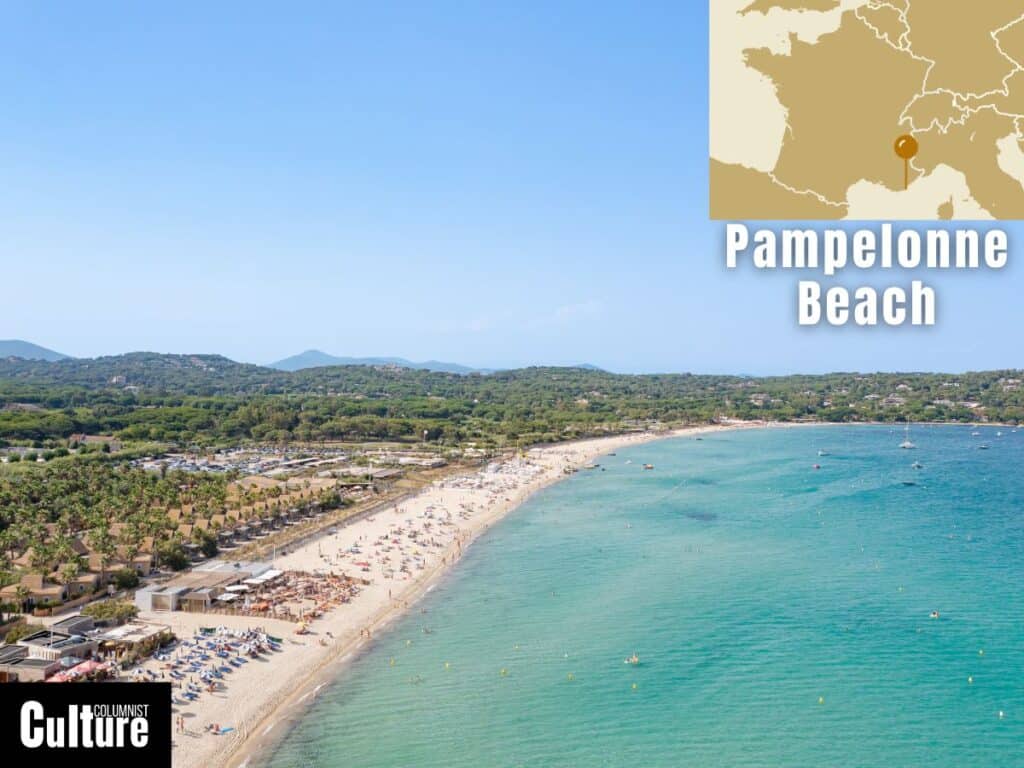
Pampelonne Beach is a famous beach in the glamorous Côte d’Azur region of southeastern France. It’s known for being a popular destination for the rich and famous and is characterized by its high-end beach clubs, designer boutiques and super yachts resting in the bay.
The beach stretches over 4.5 kilometers (2.8 miles) facing east and has fine, golden sand that’s easy to walk on. The Mediterranean waters are crystal-clear, typically calm with gentle waves crashing on the shore and have an average summer temperature of around 23°C.
The beach is split between public areas where you can lay down your towel and belongings and a range of beach clubs where you can rent sun loungers and parasols. It is best to avoid the busy months of July and August if you prefer a more relaxed atmosphere. Pampelonne has public toilets, showers, three first aid stations and lifeguards on duty from mid-June to mid-September.
Haukland Beach, Norway
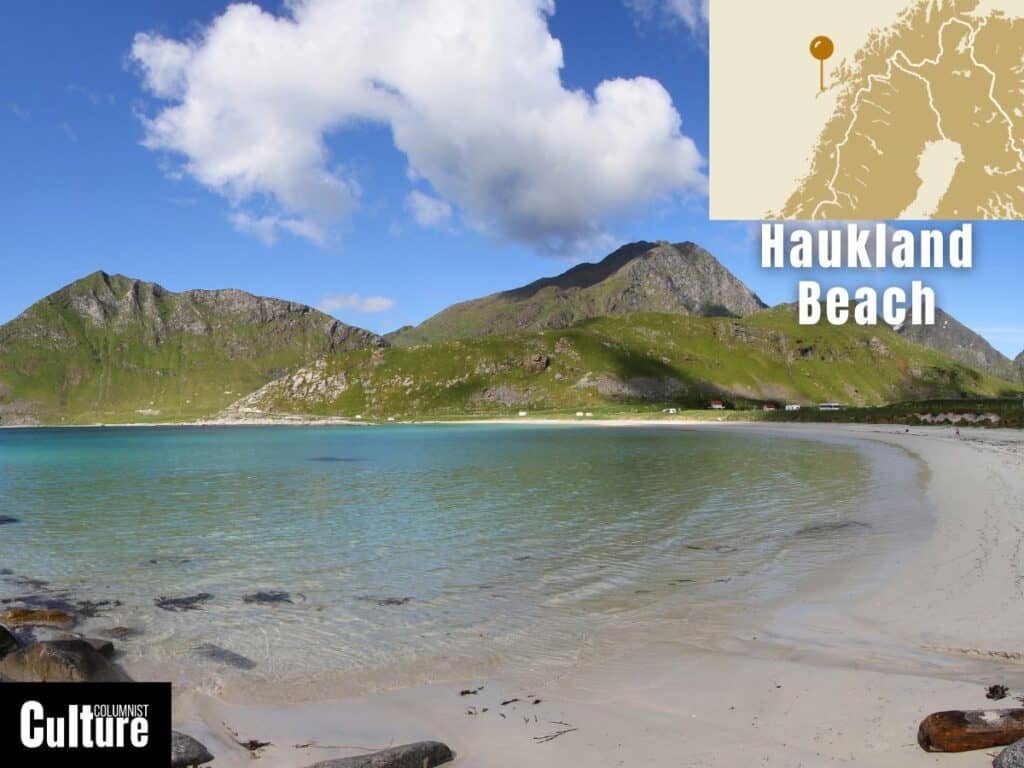
Haukland Beach is located in the Lofoten Islands in Norway and is famous for its unusual Arctic beach experience. It is often described as one of the most beautiful beaches in Norway, with its unique and dramatic backdrop of tall Scandinavian mountains.
The beach faces west into the sunset and is relatively small but it offers a blend of soft white sand and turquoise waters in the summer months. Due to its Arctic location, the water temperature rarely goes above 14 °C, even in the summer, but the clarity of the water is exceptional.
The beach never gets overcrowded thanks to its Arctic location but it’s advisable to bring your own provisions as needed. At the beach, you will find the Haukland Beach Cafe (open from 11:00 to 17:00, June to September), toilets, waste disposal stations and various activity options.
Navagio Beach, Greece
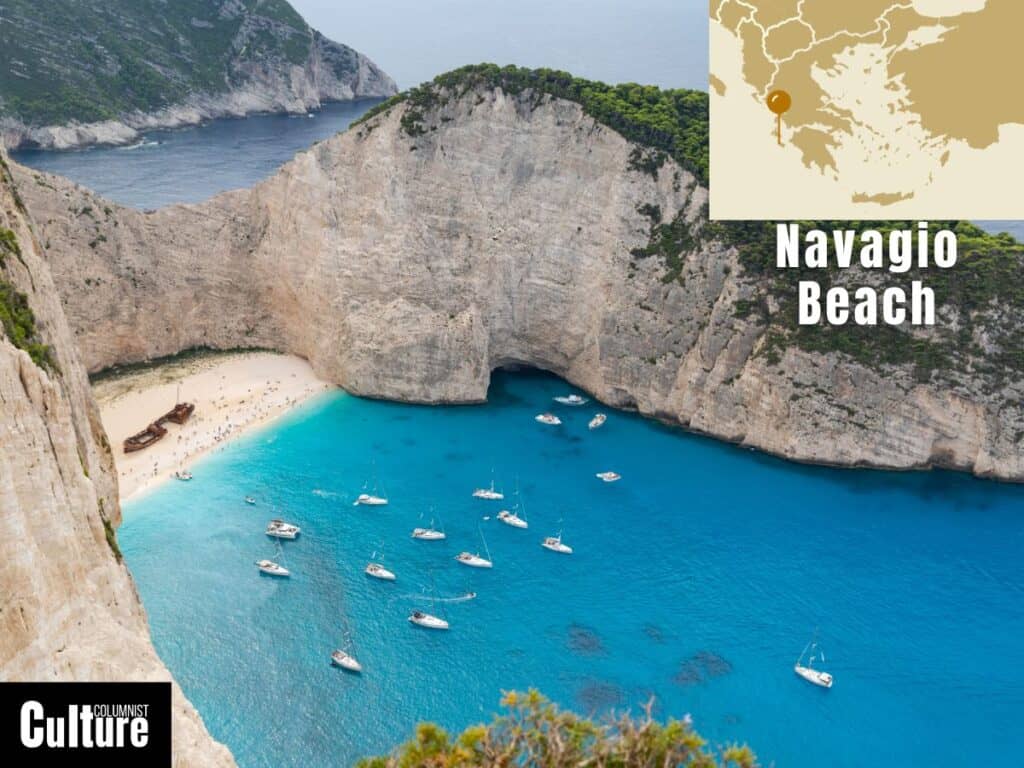
Navagio Beach is located on the west coast of Zakynthos in the Greek Ionian Islands and features the 1983 shipwreck of the Panagiotis on its shore. The rusted ruins and the dramatic landscape make it one of the most photographed beaches in Europe.
It is an isolated cove approximately 100 meters (62 yards) in length, made of coarse sand and small pebbles on its seabed. It is enclosed by towering golden cliffs that keep it shaded until the mid afternoon when the sun is high enough to illuminate the beach. It has crystal-clear azure waters that reach an average temperature of 24.8°C during the summer.
It’s best to avoid the busiest summer months of July and August if you are keen to avoid crowds of tourists. There are no amenities on the beach at all due to its remote location, so come prepared with everything you might need or book an inclusive tour.
Navagio beach is only accessible by boat, with public and private tours departing from the nearby villages of Porto Vromi, Alykanas, and Agios Nikolaos.
Cala Goloritzé, Italy
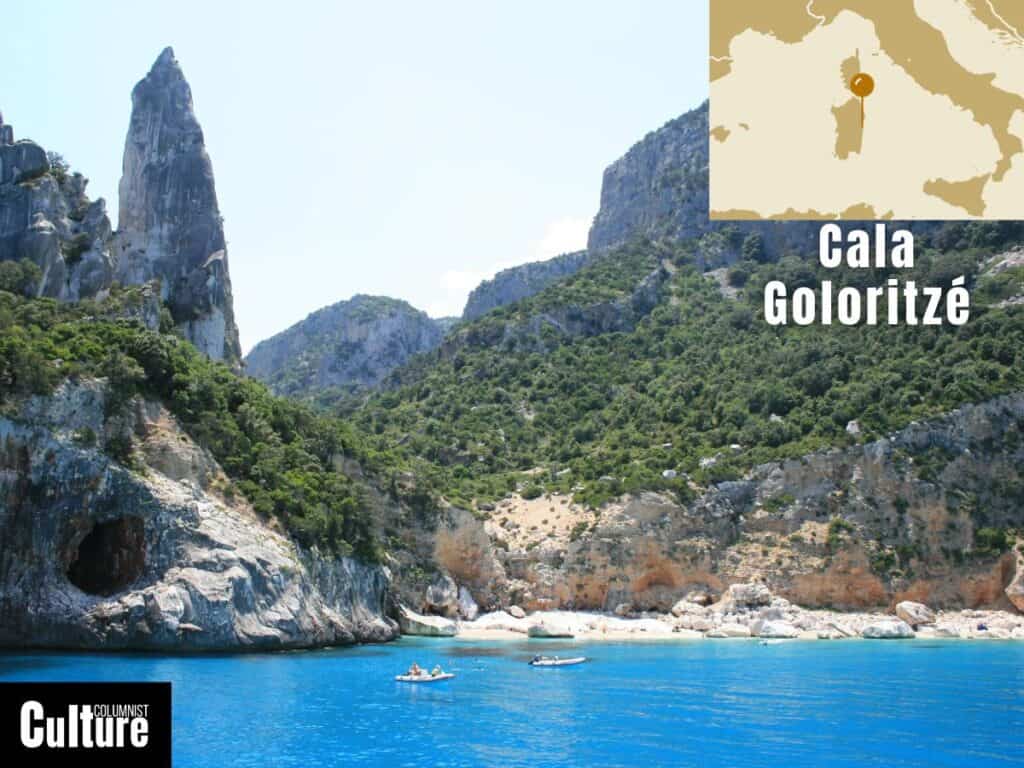
Cala Goloritzé is situated on the eastern coast of Sardinia, Italy. This idyllic beach is a UNESCO World Heritage Site and an official National Monument of Italy since 1995, famous for its limestone cliffs and spire-like rock formations.
The beach is known for its pebbly shores and crystal-clear, turquoise waters of the Tyrrhenian Sea. It’s fairly small, spanning only around 200 meters (219 yards) in length. The beach is backed by towering cliffs and the Monte Caroddi, an Aguglia, a limestone spire that is 143 meters (156 yards) high. Water temperatures vary but are generally warmer during the summer months, averaging around 24°C.
The water gets deep quickly and is crystal clear, making Cala Goloritzé an awesome spot for both swimming and snorkeling. You can see all the way to the bottom, even when it’s 15 meters (16 yards) deep. There are no amenities, so visitors should come prepared. The beach has an access fee of €6 for the full day, including parking, which you can book 72 hours in advance.
Zlatni Rat, Croatia
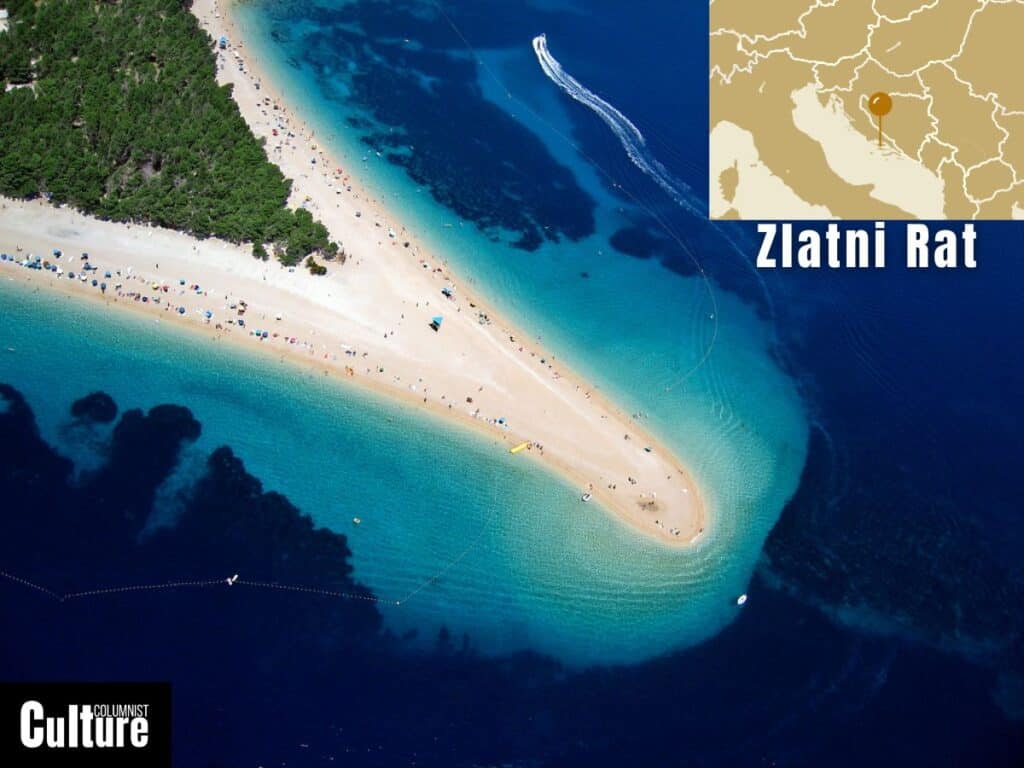
Zlatni Rat is located on the southern coast of the island of Brač, Croatia. Often called the “Golden Cape,” this beach is famous for its changing shape, influenced by winds, currents, and tides. The beach also has Blue Flag status, ensuring a clean and comfortable experience.
The beach is unique for its V-shaped pebble peninsula that extends into the Adriatic Sea. It has a length of about 500 meters (547 yards) and is covered in small white pebbles that get smaller as you reach the sea line. During the summer, water temperatures range from 22°C to 27°C.
The area of the beach is over 20,000 square meters (23,919 square yards), allowing you to find a space even in the high season. Amenities include sun loungers, parasols, and water sports facilities. Several bars and restaurants are also within walking distance. The strong thermic wind called “Maestral” makes the beach perfect for activities like windsurfing and kitesurfing.
Myrtos Beach, Greece
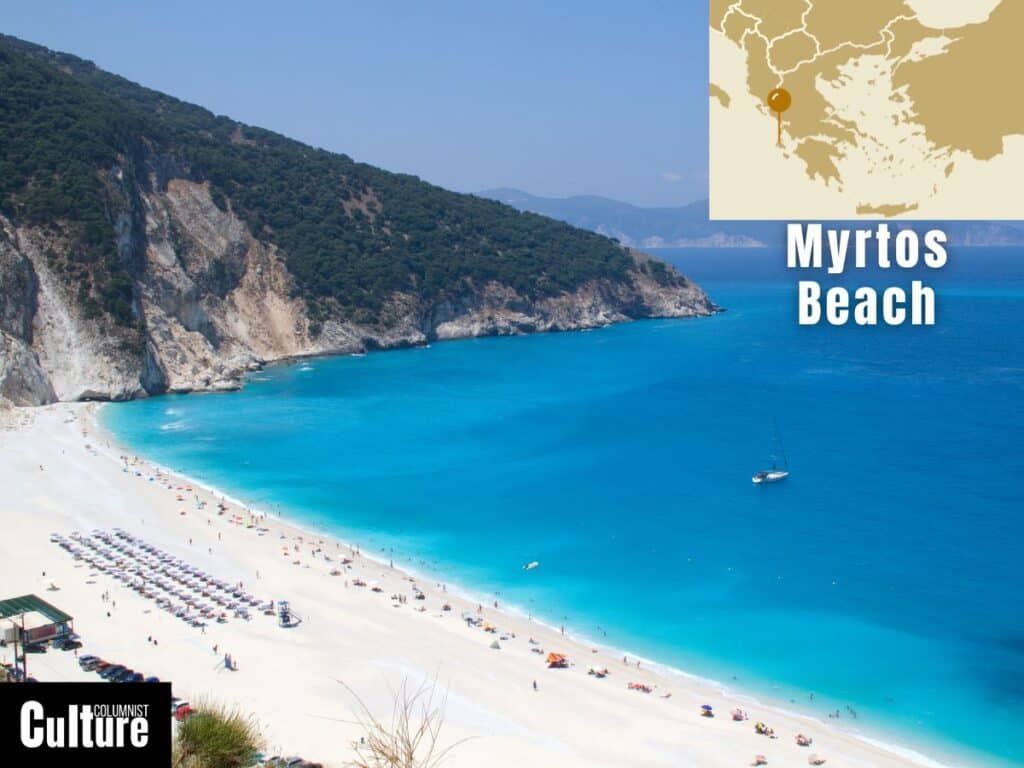
Myrtos Beach is located in Kefalonia, one of the Ionian Islands in Greece. Known for its dramatic scenery and stunning sunset views,Myrtos has been awarded Blue Flag status for its water quality and environmental management.
This beach is famous for its dazzling white marble pebbles and the contrasting shades of deep and light blue in the Ionian Sea. The beach faces west, stretching for about 1.5 kilometers (.9 miles) and is framed by towering limestone cliffs. During the summer, the water temperature averages around 25°C.
At Myrtos Beach, the water deepens fast. This means it’s not the most suitable beach for families with young kids but there are lifeguards on duty in the summer to keep everyone safe. The beach has a little snack bar open until 5:30 p.m. where you can grab coffee, snacks, and water. Plus, there’s a convenient setup with showers, changing rooms, and restrooms.
Praia da Marinha, Portugal
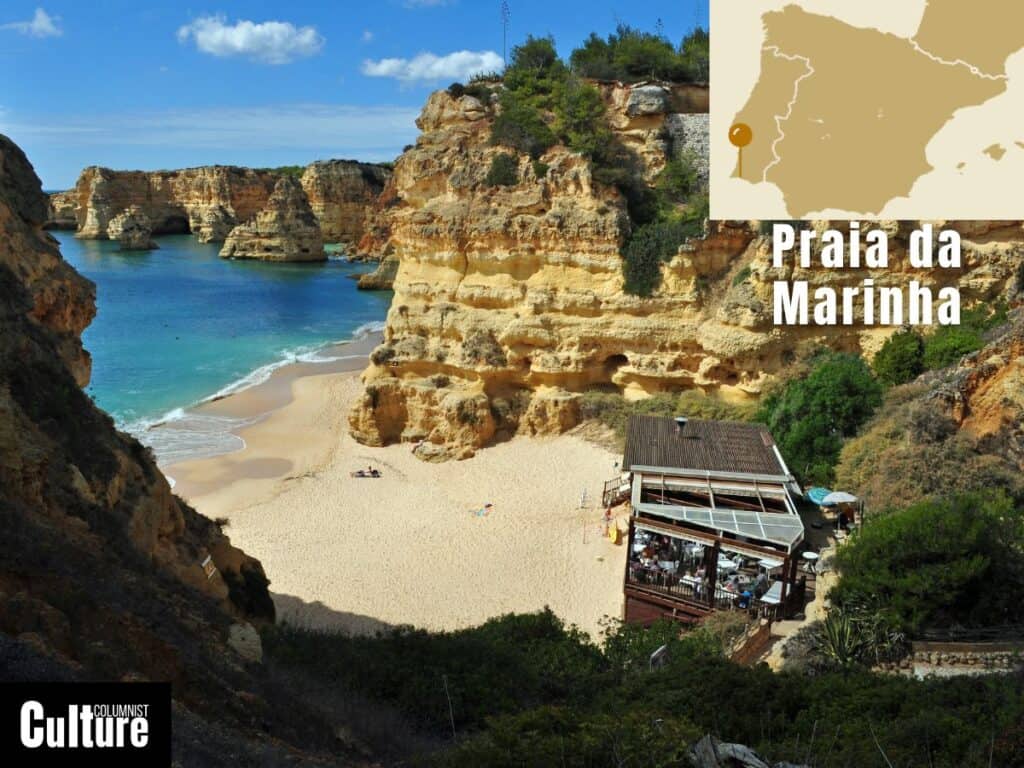
Praia da Marinha is located in the Algarve region of southern Portugal. This beach is widely considered one of the most beautiful in Europe and regularly earns a Blue Flag certification. The beach is known for its golden sands and distinctive limestone rock formations, including natural arches and grottoes.
The beach itself spans approximately 200 meters (239 yards) and is flanked by towering golden cliffs. The sea is a vivid turquoise, with an average summer water temperature of around 21°C. Take a boat or kayak trip to see the many different grottos and caves near the coastline of Lagoa, including the Benagil cave.
Sun loungers and umbrellas are available but Praia da Marinha has just a single restaurant, which also houses the beach’s only restroom. For that reason, a lot of locals opt to pack their own meals. If you’d rather dine out, several nearby restaurants, like Brisa do Mar, O Algar, and Ocean Restaurant, are just a short drive away.
Reynisfjara, Iceland
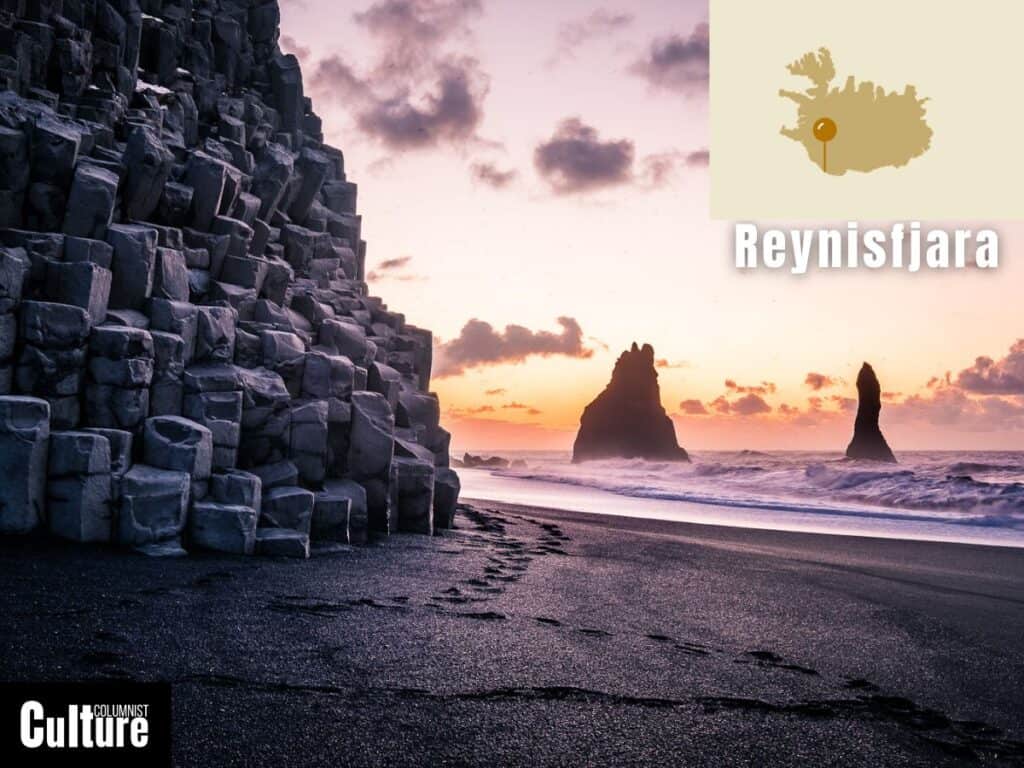
Reynisfjara is located on the southern coast of Iceland, near the town of Vík. Known for its striking black sand and dramatic basalt column cliffs, it offers a unique and otherworldly beach experience.
The beach features black volcanic sand and is famous for its sea stacks, known as Reynisdrangar, that jut out of the ocean. The water here is typically cold year-round, averaging around 8°C even during the summer months. The beach surroundings are scenic, with basalt cliffs that resemble a rocky pyramid.
It is safe to visit Reynisfjara, but pay attention to warning signs and stay a safe distance from the sea. Although you cannot swim at the beach, there is still plenty to see and do. If you’re looking to dodge the crowds of international tourists and tour buses, consider visiting the beach early in the day or in the late afternoon. There are parking facilities and a restaurant near the beach where you can warm up.
Berlenga Grande, Portugal
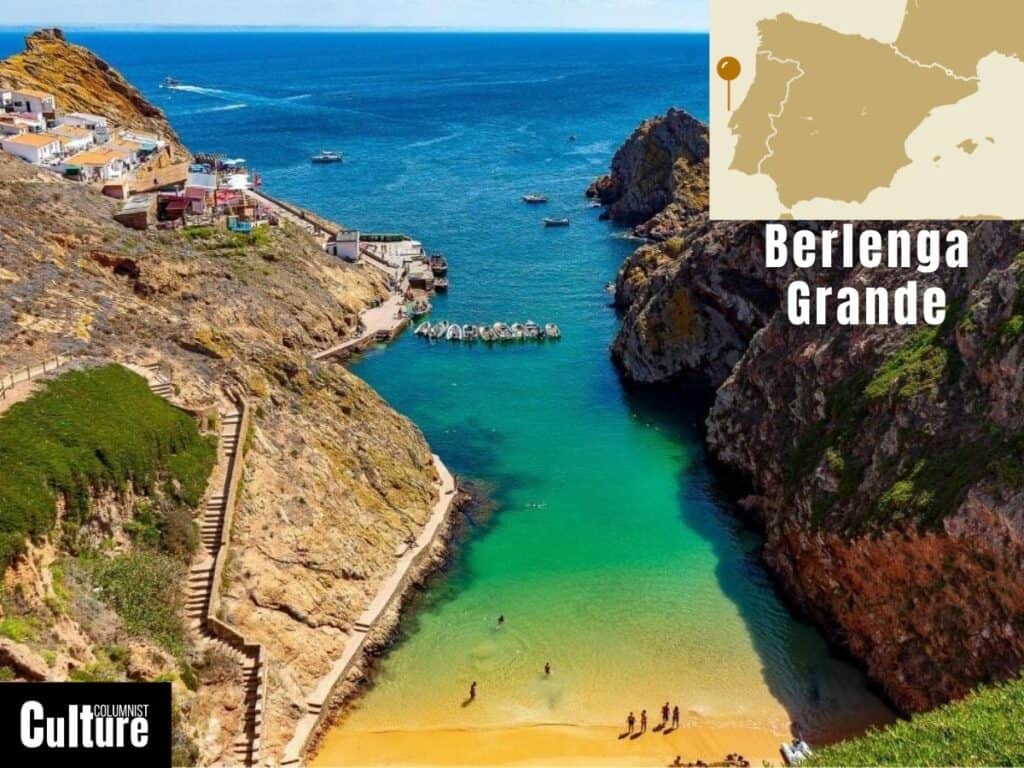
Berlenga Grande is the largest island in the Berlengas archipelago, located off the west coast of Portugal. The island’s beaches are renowned for their crystal-clear waters and are part of a designated nature reserve.
The beaches feature golden sands and are surrounded by clear, turquoise waters that are often calm due to the island’s protected status. The water temperature averages around 18°C to 20°C during the summer months, while the surrounding cliffs and rock formations provide a dramatic backdrop.
The best time to visit is May-June or September to enjoy the best of the sunshine while avoiding strong winds. However, these time frames are also peak travel periods, so it’s advisable to book your boats, tours, and lodging well in advance. Basic amenities are available on the island, but it’s advisable to bring your own supplies as options are limited.
Playa de las Catedrales, Spain
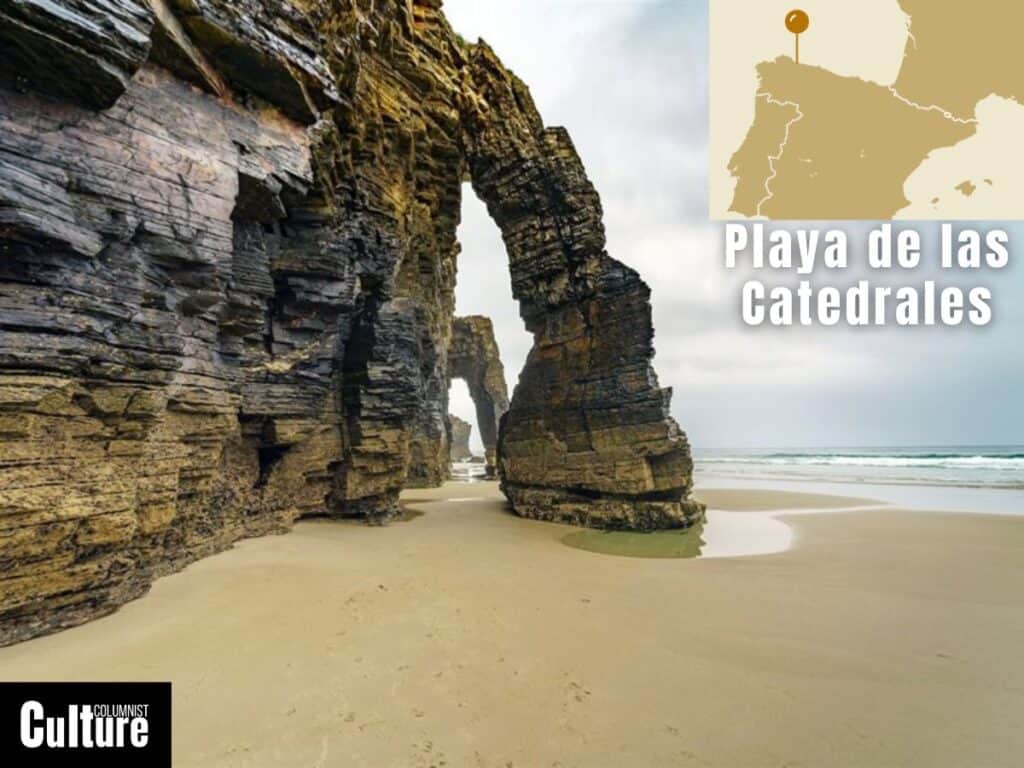
Playa de las Catedrales, also known as the Beach of the Cathedrals, is located in Ribadeo, in the province of Lugo, Galicia, in northern Spain. The beach is famous for its unique and colossal natural arches and caves, which resemble the buttresses of cathedrals.
The beach stretches for about 1.5 kilometers and features fine, golden sand. The water is clear but can be quite chilly, with temperatures averaging around 18°C in the summer. The towering natural arches and caves are best viewed and explored during low tide.
This beach is best explored during low tide, so you can access all the beach’s caves and natural arches. However, it is important to note that booking is required in order to control visitor numbers and protect the beach’s sensitive ecosystem. Basic amenities, like bathrooms, are available.
Punta Grande Beach, Scala dei Turchi, Italy
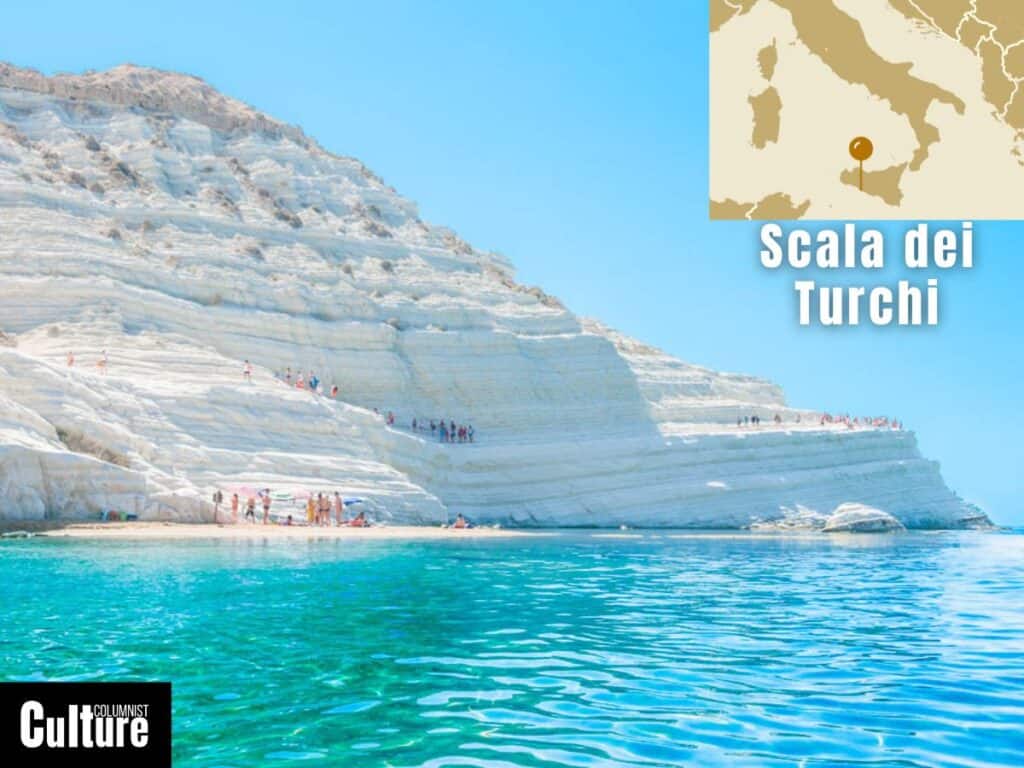
Punta Grande Beach is located on the southern coast of Sicily, near Realmonte. The beach is the closest access point to see the Scala dei Turchi, or the “Stair of the Turks,” with its white marlstone cliffs that form a natural coastal staircase. Since 2022, the cliffs have been closed to the public in order to preserve the environment but Majata Beach offers some great views of this site.
Punta Grande has soft sand and gentle waves with warm, shallow water for miles, making it ideal for swimming and family vacations with young kids. With the exception of some seaweed by the shore, the sea is clean and refreshing, with an average summer temperature of around 26°C. Sunbeds and parasols are available to rent.
After soaking in the sun and sea, make your way to the must-see Turkish Steps, which provide fantastic photo opportunities, especially during sunset when the steps are bathed in a golden glow.
Another great way to see the site is by boat tour, where you can enjoy a dip from the boat and a pleasant swim next to the cliffs. Once you’ve worked up an appetite, there is a waterfront restaurant serving fresh seafood and pasta dishes with a kid friendly menu as well.
Plage Naturiste, Cap d’Agde (nudist), France
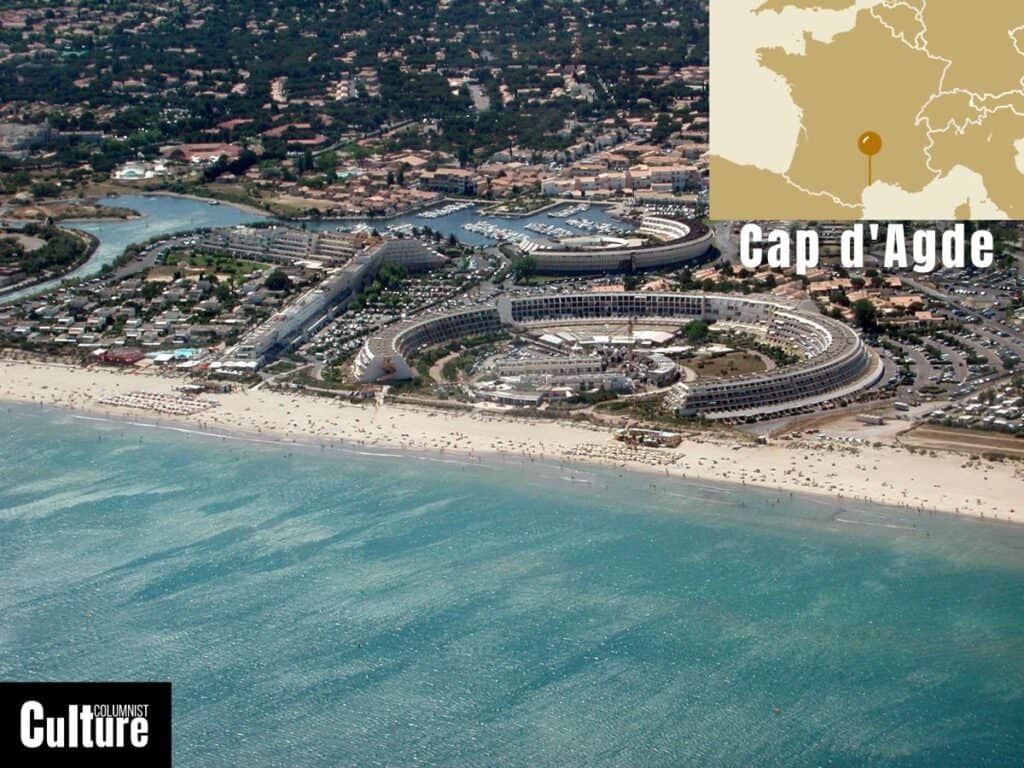
Plage Naturiste is located in the Cap d’Agde in southern France, along the Mediterranean coast. It is one of the most famous nudist beaches in Europe and is part of a larger nudist resort.
The beach faces southeast onto the Mediterranean Sea and has fine, golden sand that stretches over 2 kilometers (1.2 miles). The waters are warm and calm, averaging around 24°C in the summer months. The beaches are fully equipped, including sunbeds and parasols, excellent restaurants and are well-served by public transport with ample parking.
Cap d’Agde is very popular with people from all around the world who prefer to holiday this way. Most of the resort is ‘clothing optional’ but the 5 kilometres (3 miles) long beach in this part of the resort is for naturists only. Don’t worry if you are not a naturist – you can still visit Cap d’Agde—the naturist area is only a part of the whole resort.
Cala Macarella, Spain
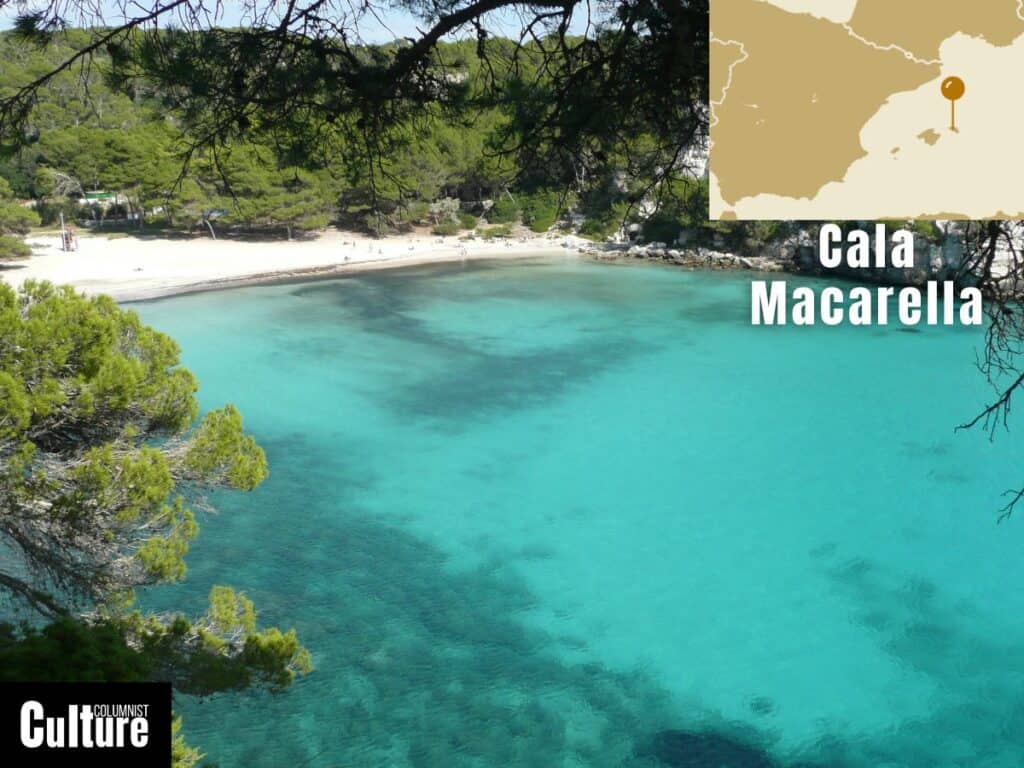
Cala Macarella is located on the island of Menorca in the Balearic Islands, Spain. Known for its crystal-clear waters and white sand, this beach is often featured in promotional images of the Mediterranean.
Cala Macarella is 110 meters (120 yards) long and 20 meters (22 yards) wide, with fine white sand and turquoise blue waters that reach an average summer temperature of around 26°C. The beach is enclosed by pine-covered cliffs, providing a sense of seclusion. Remember to bring your diving goggles and GoPro because the beach and all the surrounding areas are great for diving and snorkelling.
The beach has a large bar/restaurant offering food and beverages, and there are also restrooms, shower facilities and sunbed rentals available. It’s important to note that vehicle access is restricted during the busy summer months.
Golden Sands, Bulgaria
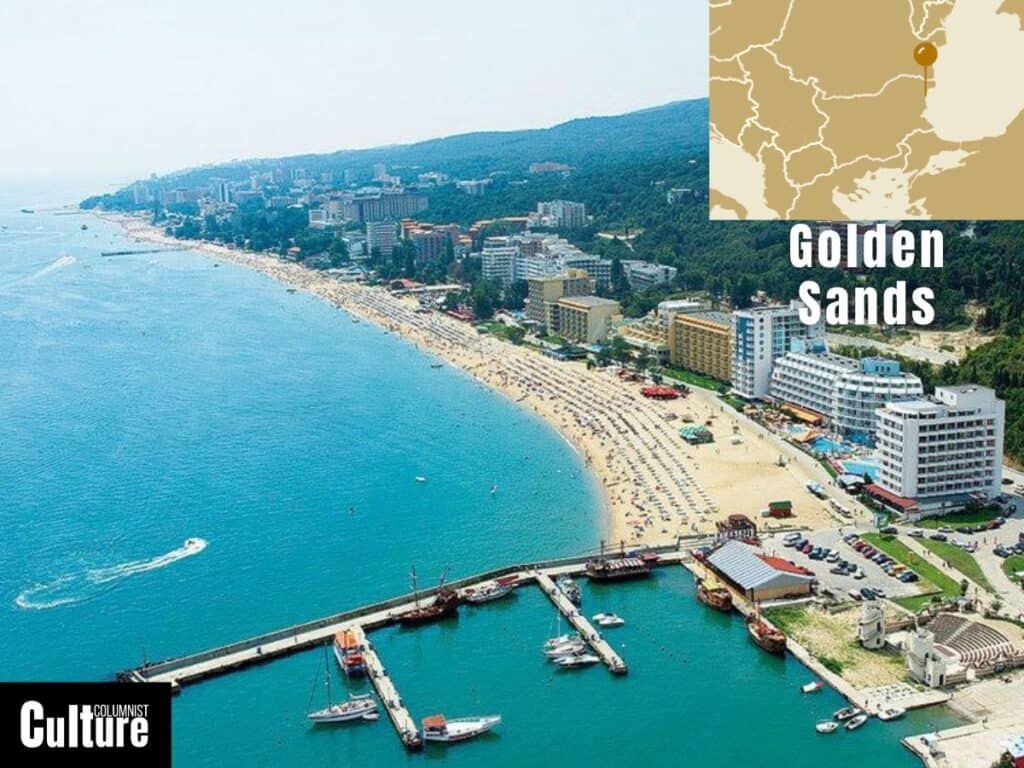
Golden Sands is located near Varna, Bulgaria, on the Black Sea coast. This beach has received a Blue Flag certification for its high environmental and quality standards. Golden Sands stands out as more affordable than other beach spots in Europe, particularly for visitors from Western European countries.
The beach is known for its golden sand and stretches for nearly 4 kilometers (2.5 miles). The Black Sea waters are relatively calm and reach an average summer temperature of around 24°C. The beach is backed by a natural park and dense forest extends all the way to the coastline, where numerous luxury hotels are nestled.
There are plenty of activities to satisfy everyone’s taste, including diving, paragliding, parachuting, water-skiing, beach volleyball, yacht excursions and vibrant nightlife. Lifeguards are on duty, sunbeds and umbrellas are available for rent and the beach is equipped with toilets, showers, and changing cabins. The beach is accessible for people with disabilities and has a large range of restaurants, bars, cafés and nightclubs to choose from.
Blue Lagoon, Cyprus
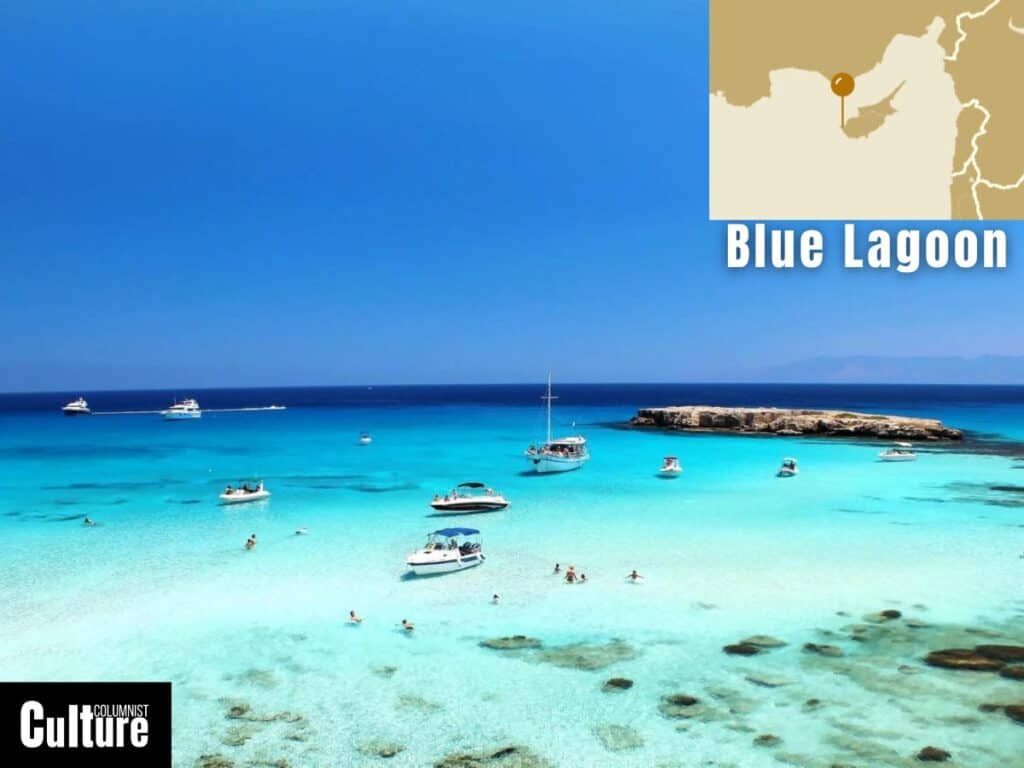
The Blue Lagoon is located in the Akamas Peninsula in the northwest of Cyprus. It’s a popular destination for boat trips and is known for its exceptionally clear, azure waters. The bottom of the lagoon is mostly soft and sandy, which means it’s a great place to enjoy for all of the family without worrying about getting hurt.
The lagoon is characterized by its shallow, turquoise waters, which are ideal for snorkeling and swimming. The water temperature averages around 27°C in the summer. The area is surrounded by rocky outcrops and lush greenery, giving it a secluded feel.
The Blue Lagoon is best accessed by boat from the nearby towns of Latchi or Paphos. You can also get there by car 1-hour north of Paphos. There are no facilities or amenities, so it’s advisable to bring your own food, water, and other necessities.
Achmelvich, Scotland
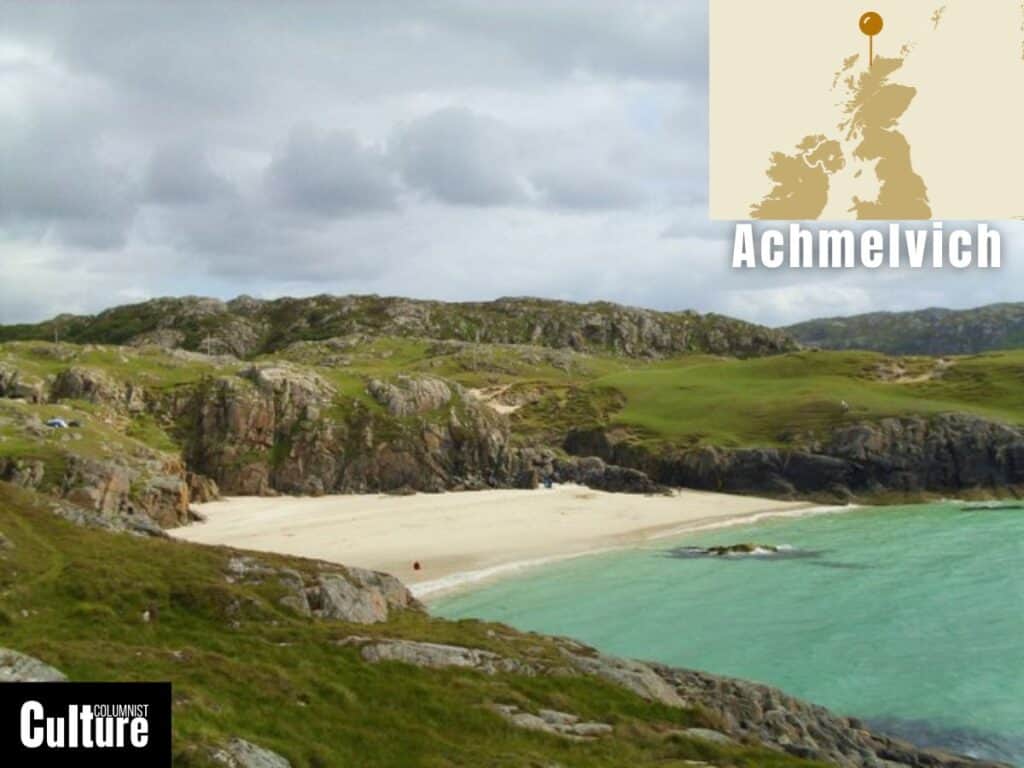
Achmelvich is situated in the Highlands of Scotland, near the village of Lochinver. This award-winning beach is known for its stunning white sand and crystal-clear waters, a rarity in the UK. The beach sits off the North Coast 500, a famous route that takes travelers through the best sights and scenery in Scotland.
The beach is approximately 500 meters (598 yards) in length, boasting fine, white sand. The surrounding water is remarkably clear but can be quite cold, averaging around 14°C even in summer. The area is framed by rocky hills and greenery and is perfect for an adventure seeker who likes hiking trails and panoramic beach views.
Achmelvich is accessible by car, with parking available near the beach. There are no shops or restaurants on the beach, so if you need provisions, you’ll have to stop by the local shop in Lochinver. The surrounding area does offer accommodation, allowing you to see the beach at sunset and sunrise if you wish.
Oludeniz Beach, Turkey
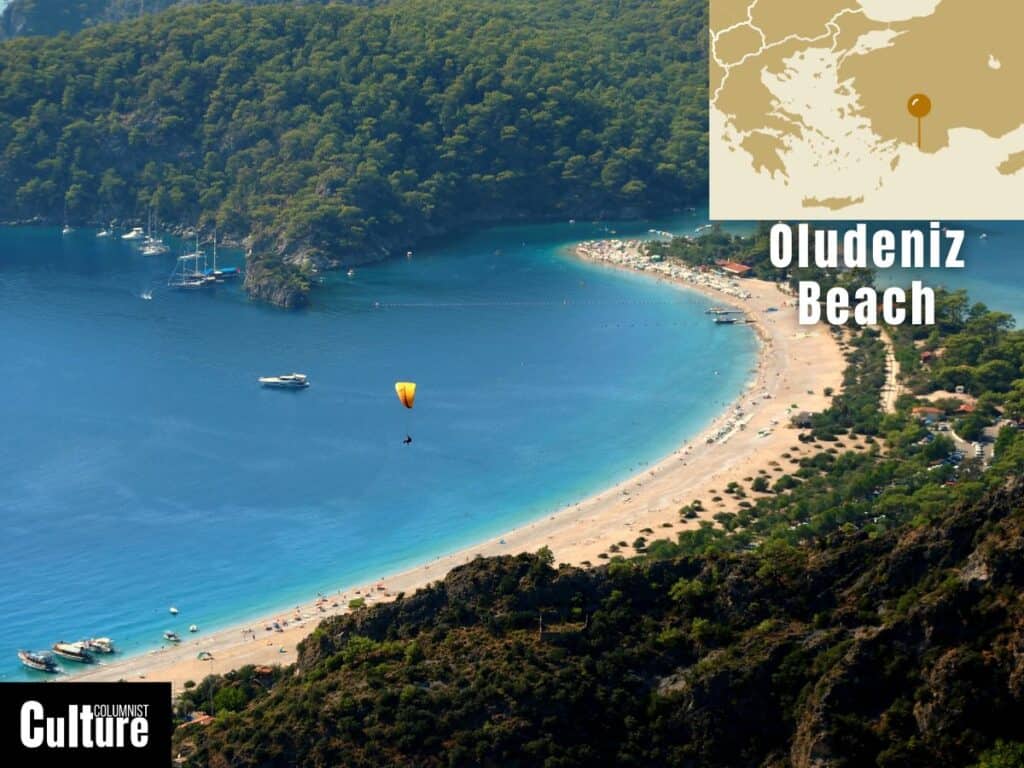
Oludeniz Beach is located near Fethiye in southwestern Turkey. Known for its blue lagoon, the beach is a hotspot for paragliding due to the stunning aerial views. The lagoon is separated from the sea by a curving spit of sand, making the waters very calm and perfect for children.
The beach is famous for its turquoise and aquamarine waters, which reach summer temperatures of about 26°C. The main beach is about 1.5 kilometers (0.9 miles) in length and 100 meters (109 yards) wide, surrounded by pine trees and lush mountains. The best times to go are from April to June or in September, when the heat is less intense and tourist crowds are fewer.
Easily accessible by road, Oludeniz offers a range of amenities on the beach and in the surrounding area, including restaurants, bars, and shops, making it a popular destination for those seeking a vibrant atmosphere. Sunbeds and umbrellas are available for rent, and water sports facilities are also plentiful.
Silent Bay, Italy
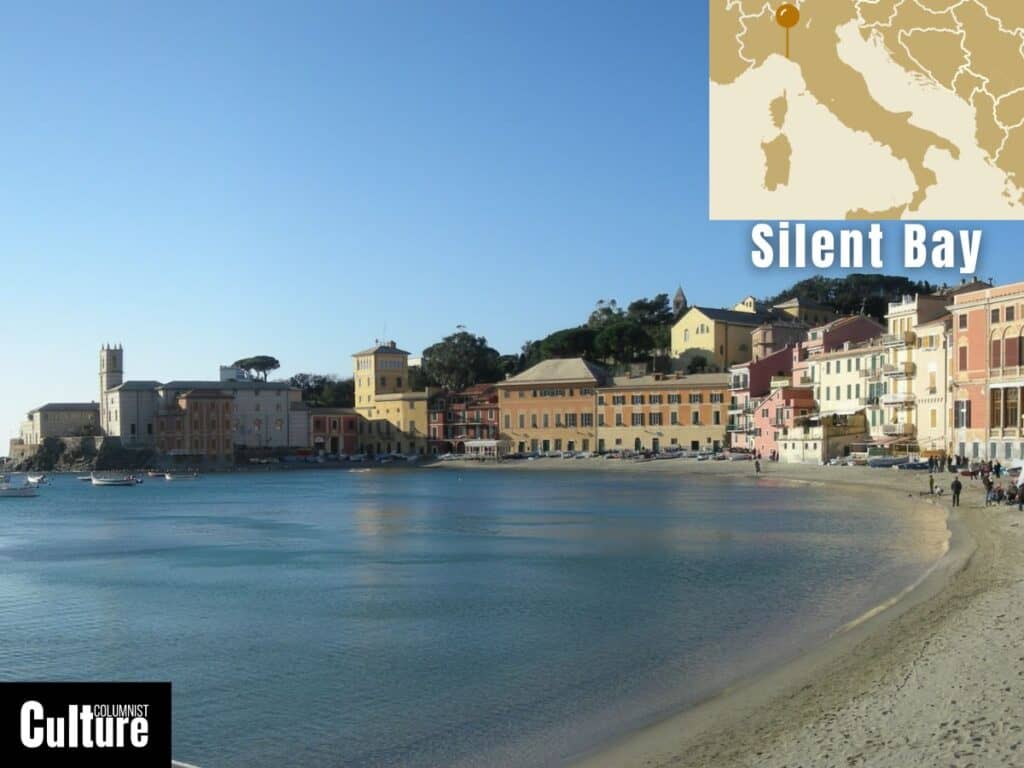
Silent Bay, or Baia del Silenzio, is located in Sestri Levante on the Italian Riviera. The beach is known for its serene atmosphere, sheltered conditions and unique coastline framed by the facades of colorful buildings in the vibrant Ligurian style village.
The bay features a crescent-shaped beach about 200 meters (219 yards) in length with fine, golden sand. The water is calm and clear, averaging a temperature of around 25°C in the summer. The beach has sunbeds and parasols available for rent but it can get crowded due to the limited space.
With the town right next to the beach, getting a fresh piece of focaccia, ordering seafood for lunch or cooling down with a gelato is a breeze with all of the authentic Italian eateries scattered among the alleys of this small town. With waterfront accommodation available, you can wake up in the morning and quite literally have the beach on your doorstep.
Sveti Stefan Beach, Montenegro
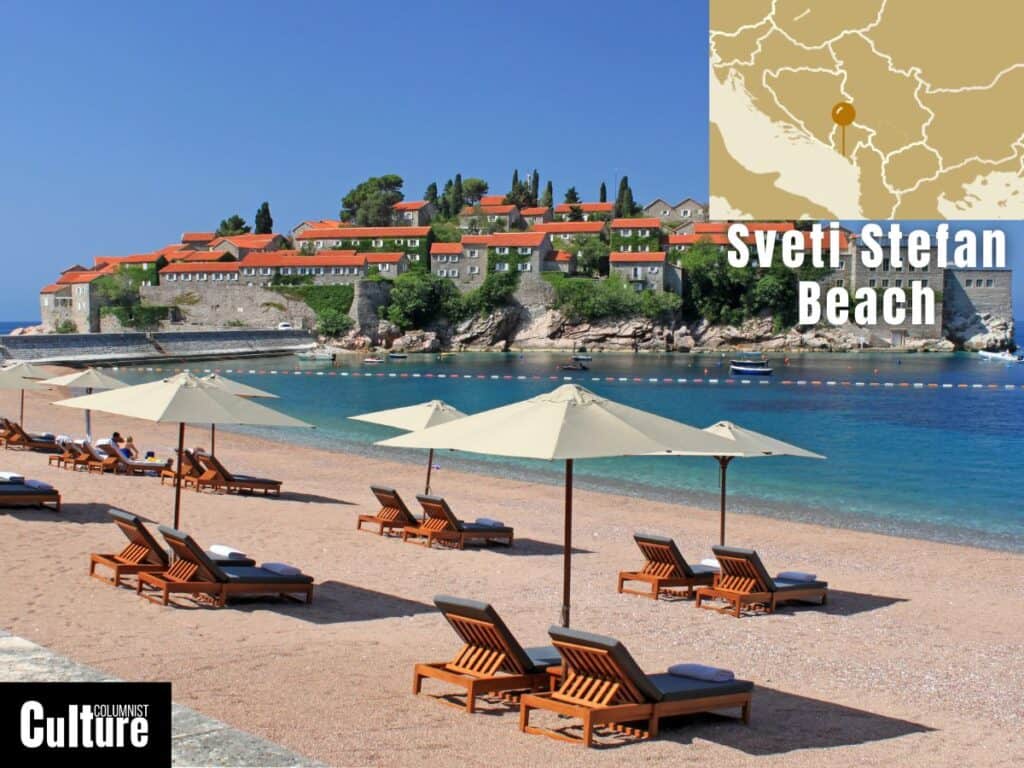
Sveti Stefan is located on Montenegro’s Adriatic coastline, southeast of Budva, between Pržno and Sveti Stefan villages. It is best known for the picturesque islet, occupied by a luxurious resort, that connects to the mainland by a narrow causeway leading on to the pink-hued sands that give the beach its unique touch.
The beach’s pinkish tint, a mixture of white sand and pink shells, is surrounded by blue waters that get to a temperature of around 25°C in the summer. The view of the islet makes the beach particularly special. It was renovated as a luxury hotel, preserving the original character with authentic stone buildings and typical red roofs.
The beach is divided into a private part for resort guests and a public part. The public section of the beach is accessible to all and offers amenities like sunbeds and umbrellas for rent, as well as a number of cafes and restaurants.
Simos Beach, Greece
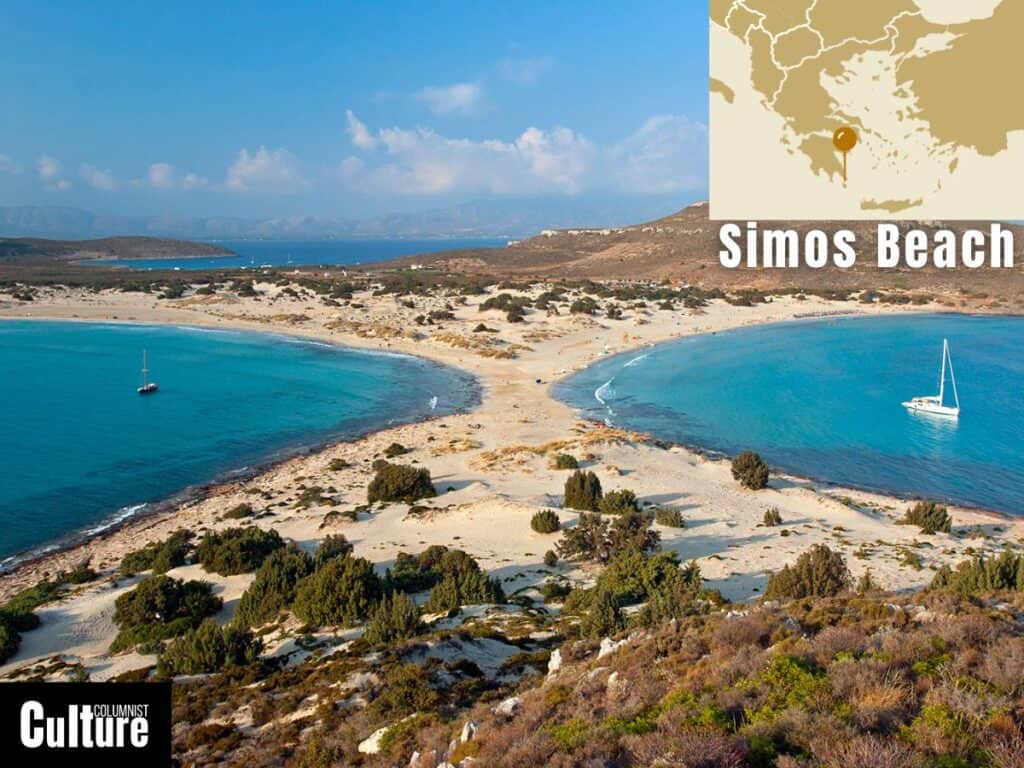
Simos Beach is located on Elafonisos Island in southern Greece, off the coast of the Peloponnese. It’s famed for its dunes and extremely fine, golden sand. As one of the least visited and remote islands in Greece, this beach is perfect for those looking for somewhere that is off the beaten track to escape the crowds.
Simos Beach consists of two beaches connected by a peninsula that forms two large, crescent-shaped bays on either side. The water is exceptionally clear and can reach temperatures up to 27°C in the summer, making it perfect for snorkeling, so make sure to bring some goggles
It is possible to rent a sunbed and parasol on the beach and there are a small number of local tavernas and restaurants within walking distance. Dunes and cedar trees are dotted all around, adding to the wild beauty of the area and allowing you to explore a little to find some even more secluded spots.
La Pelosa Beach, Sardinia, Italy
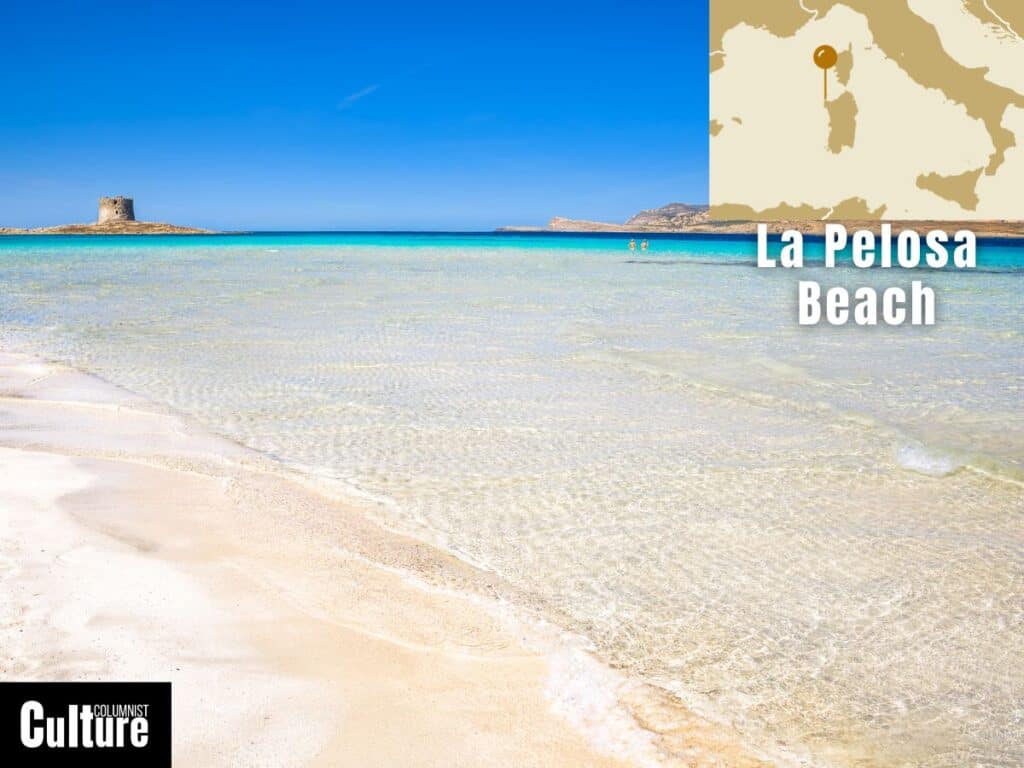
La Pelosa Beach is located in the province of Sassari, in the northwestern part of Sardinia, Italy. Known for its shallow turquoise waters and fine white sand, it is one of the most popular beaches in Italy. The iconic Aragonese watchtower adds a historical touch to the landscape.
The beach stretches for about 300 meters (328 yards) in length and 60 meters (66 yards) in width and is characterized by powdery white sand and exceptionally clear, shallow waters, which can reach temperatures up to 26°C in summer. The beach is exposed to wind, making it a paradise for watersport activities such as windsurfing, kite surfing and sailing.
La Pelosa Beach operates under strict conservation measures, capping daily visitors during the high season. Spots can be reserved well in advance, while the remaining spots are available for booking within two days prior to your visit, making last-minute visits still possible.
Plage de Saleccia, Corsica, France
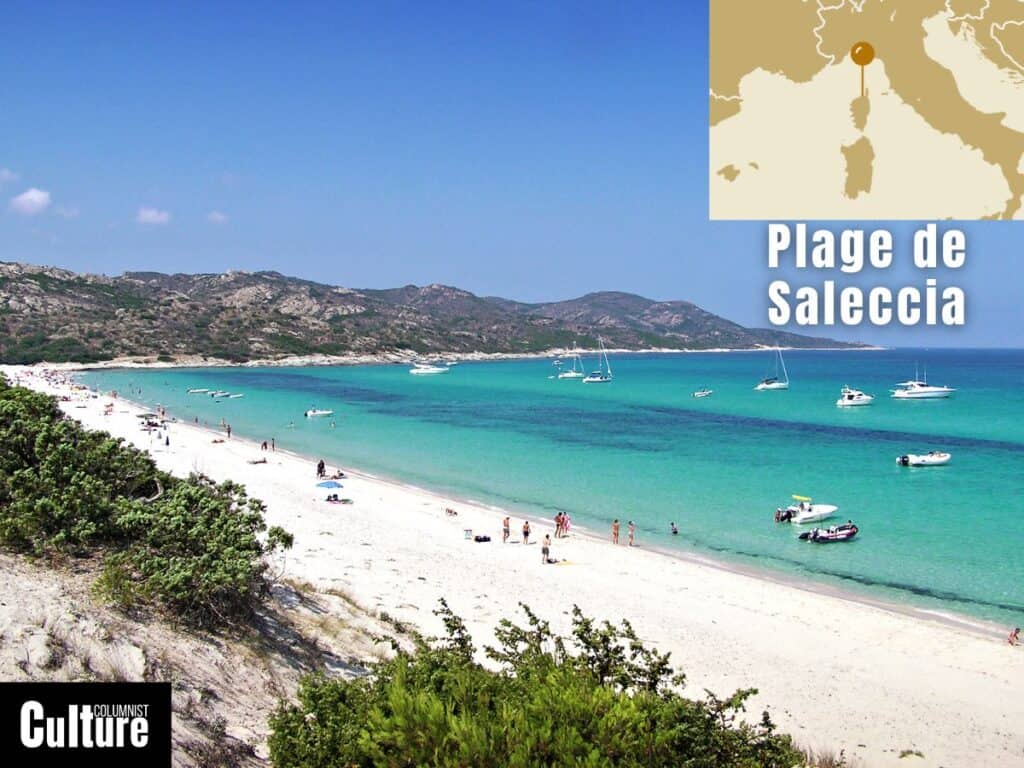
Plage de Saleccia is situated on the island of Corsica, France. This remote beach is mostly unspoiled and is less frequented by tourists. Its untouched beauty is hard to come by elsewhere in the Mediterranean and is often compared to Caribbean beaches.
The beach features fine, white sand along a stretch of about 1 kilometer (.6 miles). The crystal-clear waters are relatively cool, averaging around 24°C in the summer. The area is surrounded by dunes and pine forests.
There are no tourist amenities on the beach and there is nowhere to seek shade under the midday sun. Make sure to bring your own supplies and a sun umbrella or pop-up tent for some shade. There is a restaurant close to the beach where you can grab lunch and a cold beer.
Monolithi Beach, Greece

Monolithi Beach, located in Preveza, Greece, faces west onto the Ionian Sea. This iconic beach is known as the longest sandy beach in Europe. Its size and off-the-beaten track location on the Greek mainland make it perfect for those seeking somewhere that is less touristy.
The beach stretches over 25 kilometers (16 miles) long with its seemingly endless expanse of golden sands and the crystal-clear azure waters lapping on the shore. Its shallow waters reach 24°C on average in summer, making it a safe and ideal choice for families with children or those looking to engage in watersports like windsurfing and paddle boarding.
You’ll find sections of the beach equipped with sun loungers and parasols for rent, but you can also find quieter spots where you can lay your own towel. There are no shops directly on the beach but there are several beach bars dotted along the beach where you can fill up on some traditional Greek cuisine.
Porto Katsiki, Greece
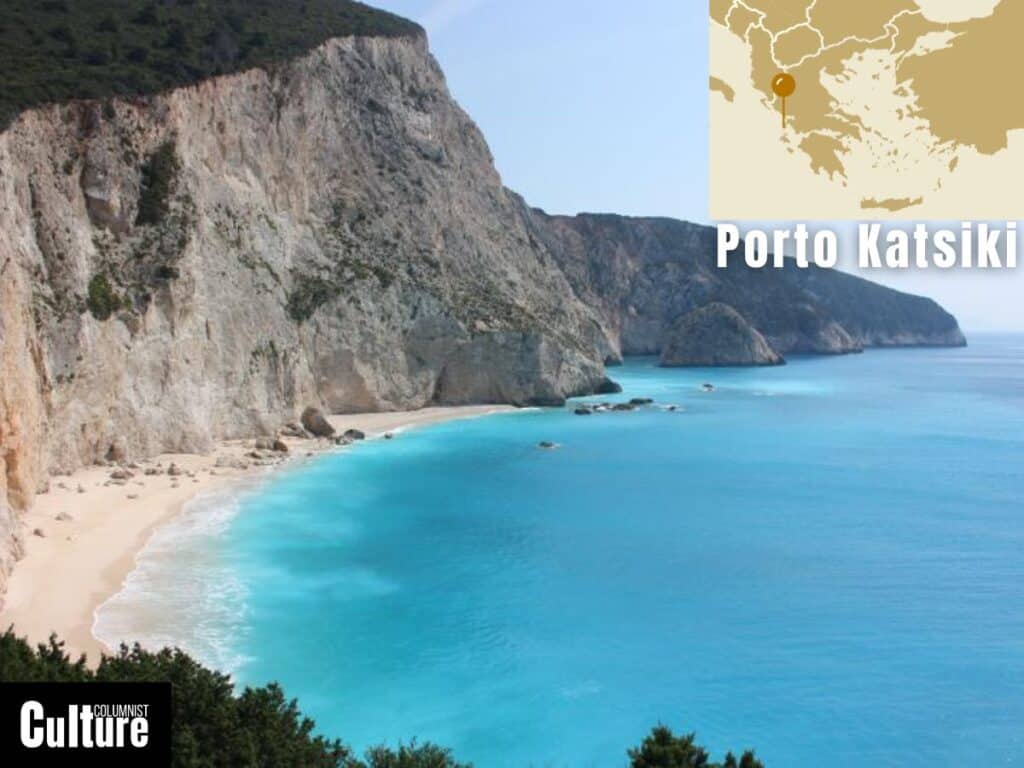
Porto Katsiki is located on the island of Lefkada in Greece. Known for its towering cliffs and deep blue waters, this beach is one of the most famous in Greece. The beach is perfect for those looking for an adventurous road trip, as it’s far from the main towns of the island and is only accessible by a long, winding coastal road with stunning views or by boat.
The beach is about 350 meters (419 yards) long and is surrounded by steep cliffs, providing a dramatic backdrop to the turquoise sea, which can reach temperatures of 26°C in the summer months. The beach is made of small pebbles and coarse sand that’s easy to walk on. The seafloor gets deep rather quickly so it may not be ideal for young children.
Amenities are limited to a few snack bars serving cold drinks and fast food but they do have some shaded areas where you can sit and eat with stunning views down the coast. Sunbed and parasol rental is not guaranteed so it’s best to bring your own and come early to secure a spot as it can get crowded during peak season.
La Concha, Spain
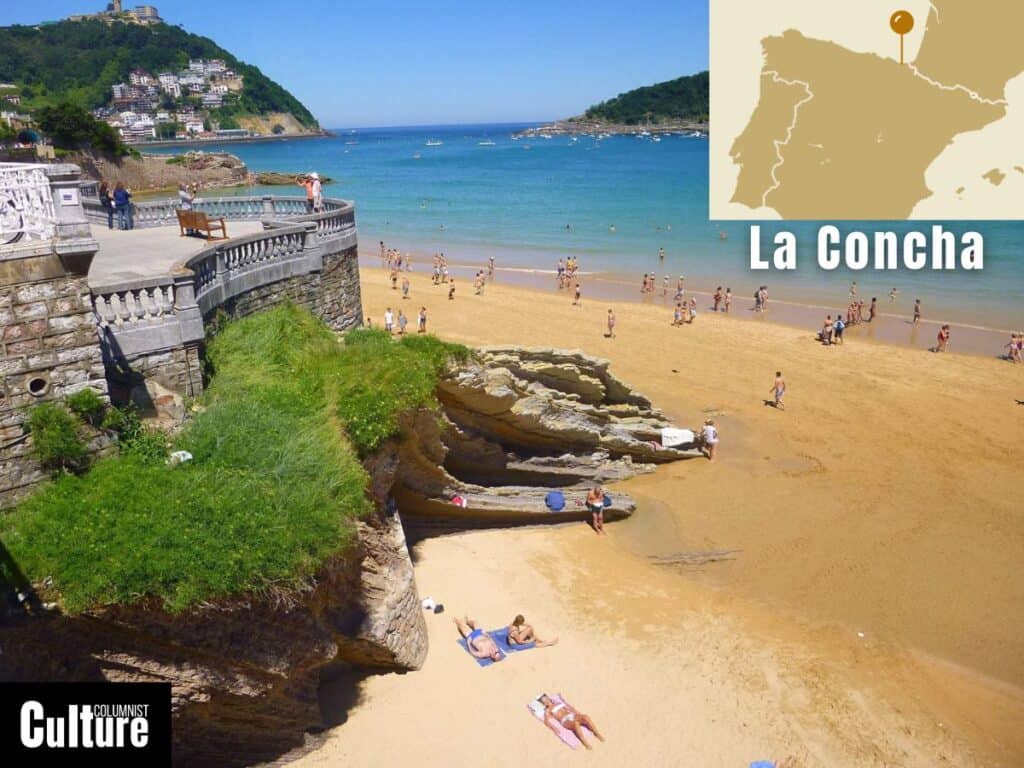
La Concha is located in San Sebastián, in the Basque Country of northern Spain. Often rated as one of the best urban beaches in Europe, it is known for its golden sand, safe swimming conditions and picturesque views of the town. In fact, this beach is perfect for anyone who wants a bit of versatility and plenty of activities to do.
Stretching for around 1.5 kilometers (.9 miles), the beach boasts fine, golden sand and calm, clear waters that stay shallow and can reach up to 22°C in the summer. With a beautiful promenade, boat trips, spas, cultural events, kayaking and paddleboarding, this urban beach can cater to a range of tastes.
While the tides may sometimes reduce the amount of beach space, the views from La Concha are beautiful, whether you’re in the water or on the shore. La Concha is fully equipped with necessities like parasols, restrooms, showers, and lockers to store your belongings.
What is the longest coastline in Europe?
Norway has the longest coastline in Europe, stretching over 83,000 kilometers (about 51,573 miles) when including all its fjords, bays, and islands. This extensive coastline is one of the most intricate in the world due to its abundance of fjords that cut deep into the landscape, creating a complex and rugged shoreline.
The Norwegian coastline, created by glacial activity during the ice ages, is flanked by deep, narrow inlets, steep cliffs and mountains, creating some of the most stunning scenery on the continent. The fjords are so significant and unique that the West Norwegian Fjords of Geirangerfjord and Nærøyfjord have been designated UNESCO World Heritage Sites.
Which country in Europe has the best beaches?
Greece is often considered to be the country with the most beautiful beaches in Europe. From the dramatic cliff-framed Navagio Beach with its shipwreck on Zakynthos Island to the pink sands of Elafonissi Beach in Crete, Greece offers a diverse range of beach destinations and water activities to enjoy in crystal-clear waters.
Greece has 617 beaches with Blue Flag status as of 2023, an international award given to beaches and marinas that demonstrate high environmental standards. Halkidiki in northern Greece is a leading Blue Flag destination, boasting a total of 94 beaches with the prestigious eco-label.
Which island in Europe has the best beaches?
Crete is often celebrated as an island with some of the best beaches in Europe. Out of the 617 blue-flag beaches, 139 are on Crete Island. Famous beaches like Elafonissi with its pink sand and shallow turquoise waters, Balos Lagoon with its exotic scenery, and the palm-fringed Preveli are some of the most well-loved.
Crete’s extensive coastline offers a wide variety of beaches, from long stretches of soft, golden sand to secluded coves and pebble beaches. The waters around Crete are known for their clarity and beautiful shades of blue and turquoise. The clean and clear waters are ideal for swimming, snorkeling, and diving, offering visibility to explore the rich marine life.
Other European islands known for their idyllic beaches include Sardinia, with its renowned Costa Smeralda; Mallorca, with over 50 kilometres of beaches; and the Canary Islands, with hidden coves and clear waters, all of which contribute to Europe’s reputation for having some of the best beach destinations in the world.

